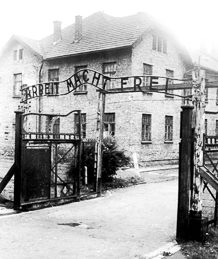
At the age of 25, he stepped off the first transport train carrying Jews to KL Auschwitz II-Birkenau in April 1942. Lale Sokolov (1916−2006), then known as Ludwig “Lale” Eisenberg, was soon to exchange his name for a number. He would never be allowed to forget the number—32407—as it was tattooed on his arm. Before long, Lale would take over the duties from the prisoner who tattooed his arm and begin almost three years as the camp’s primary tetovierer (tattooist). Several months later, Lale would tattoo 34902 onto the arm of his future wife.
Did You Know?
The Dachau concentration camp opened in March 1933 and did not cease operations until April 1945. It was the first camp established under the Nazi regime and the only one to survive the entire twelve years of the Third Reich. It was built to hold political prisoners (as time went on, Polish prisoners would dominate the camp’s population). Dachau was never intended to become an industrialized extermination camp such as Auschwitz II-Birkenau. Dachau deaths were primarily from beatings, malnutrition, disease (e.g., typhus), and suicide. It is impossible to accurately assess the final number deaths attributed to Dachau.
KL Auschwitz
The main camp known as Auschwitz I was built in May 1940 in the newly annexed area of Poland. It was originally constructed to house Polish political prisoners. By September 1941, exterminations had begun and the Nazis determined a second camp was needed. So, by March 1942, a sub-camp named Auschwitz II-Birkenau was completed with its first gas chamber.
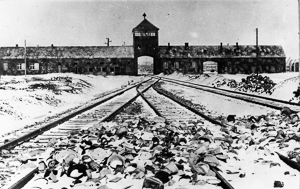
Nazi plans for the Final Solution had been finalized in January 1942 and by early 1943, Himmler decided to expand Birkenau and increase its capacity as an extermination camp. It is estimated that 1.3 million people were sent to Auschwitz with 1.1 million murdered. More than 90 percent or 1.0 million of the people murdered here were Jews (in other words, one in six Jews who perished in the Holocaust were murdered at Auschwitz). Watch a short documentary on Auschwitz.

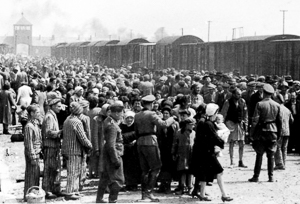
A third sub-camp was established on the grounds of an IG Farben factory located in Monowitz. It was called Auschwitz III-Monowitz and was used primarily to supply forced labor to IG Farben. The company owned the patent to and participated in the profits of Zyklon B, the chemical used by the Nazis in the gas chambers.
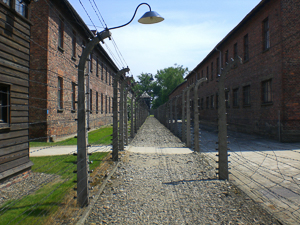
One thing in common between the three camps was that any prisoner not chosen for immediate death would be assigned a number which was then tattooed on their arm. These were the only camps in the Nazi Konzentrationslager or KL system of camps that tattooed their inmates (men, women, and children). Many of the prisoners would subsequently be transferred to other camps leaving the mistaken impression with the Allied liberators that all camps practiced tattooing.
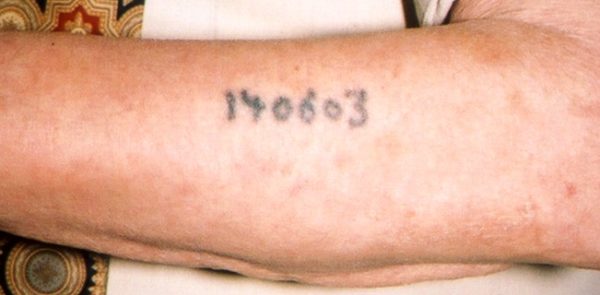
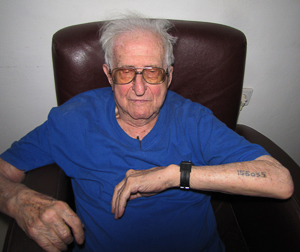
The Tetovierer
Lale contracted typhoid shortly after arriving at Birkenau but was nursed back to health by a fellow inmate, Pepan, who happened to be the camp’s chief tattooist. Lale became his assistant and after Pepan disappeared one day, Lale was chosen to replace him. The tattooing operation at Auschwitz was supervised by one of the camp’s notorious doctors: Josef Mengele. Many times, Lale would be required to stand next to Mengele as the evil and sinister “Angel of Death” chose his next victims for medical experiments. Often, Mengele would turn to Lale and say, “One day, tetovierer, one day I will take you.”
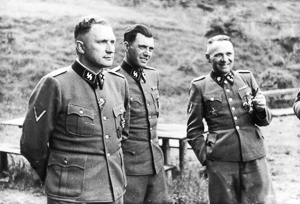
Lale struggled to look into the eyes of the person he was tattooing and with women and children it was especially hard. One day, he was tattooing a number on an 18-year old woman when he looked her in the eyes and immediately fell in love. She was named Gisela (Gita) Fuhrmannova. Read the BBC article on Lale here.
Political Wing of the SS
Lale was given papers identifying him as Politische Abteilung or “Political Department” of the SS. An SS officer was assigned to watch over him which provided an extra layer of protection. He received special privileges such as eating in the administration building, extra food rations, slept alone, and had free time when there were no prisoners to tattoo.
The SS officer acted as a liaison between Lale and Gita, delivering letters and allowing Lale a limited amount of time to meet with her on Sundays. While Lale had immediately fallen in love, it took Gita some time as she saw the hopelessness of their situation. Everything Lale did for Gita was with the intention to show her hope and that a future did exist for them.
End of the War
As the Soviet army neared Auschwitz, the Nazis began to ship the prisoners to other concentration camps (Himmler’s orders were that no prisoner was to fall into the hands of the enemy). Two days before the camp was liberated on 27 January 1945, Gita was shipped out of Auschwitz. Lale had no idea where she went. Shortly after, he was sent to the Mauthausen concentration camp.
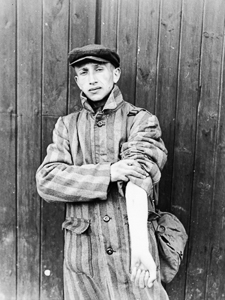
Lale performed a daring escape from Mauthausen and swam across the Danube River to reach freedom. He walked to Bratislava, the city that was accepting survivors returning to Czechoslovakia. For weeks, he waited at the train station hoping to see Gita get off one of the trains. During this time, he found out that only a sister had survived. He could not confirm his parents’ exact fate.
Lale was about ready to give up the wait and join the Red Cross efforts when a woman walked up to him. He looked into her terrified eyes and immediately recognized her—it was Gita.
Marriage
Gita and Lale were married in October 1945. After finding it dangerous to live in a communist country, the couple immigrated to Australia where they started up a textile business. The former Auschwitz inmates never told their story to anyone, even their son. Gita passed away in 2003 at the age of 79.
After her passing, Lale felt the time was right to explain his story. Over a period of three years, Lale laid out his life story to Heather Morris. Her new book, The Tattooist of Auschwitz, is a tale of survival and love. Watch an interview with Ms. Morris as she describes her experience working with Lale. Watch here.
Lale Sokolov died in 2006. He never knew that his parents had died at Auschwitz I the month before he arrived at Birkenau.
Most concentration camp survivors were reluctant or refused to tell others of their experiences and treatment at the hands of the Nazis. Each person had their own personal reason for making that decision. Lale’s fear was that he would be branded as a collaborator.
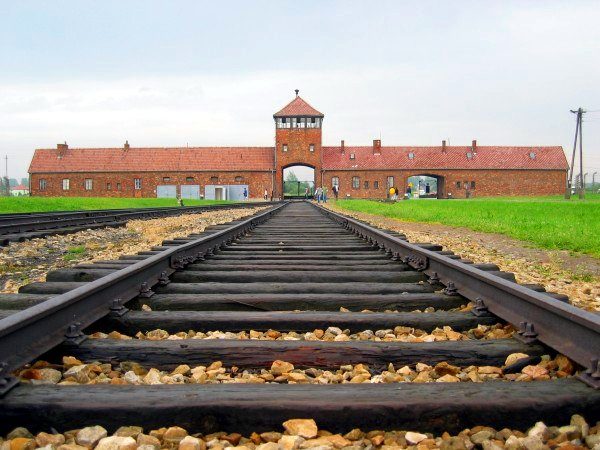
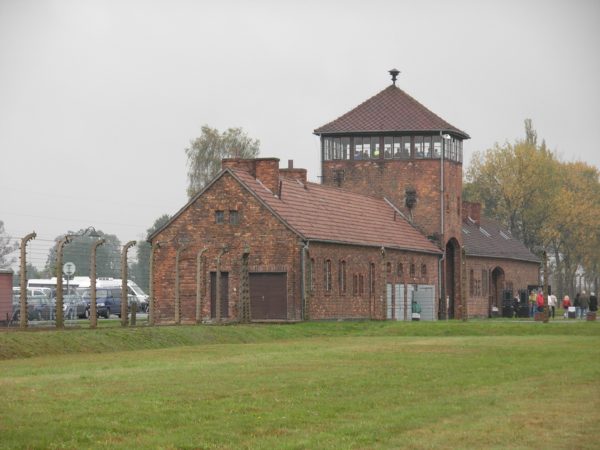
Recommended Reading
Morris, Heather. The Tattooist of Auschwitz. London: Zaffre Publishing, 2018.
Wachsmann, Nikolaus. KL: A History of the Nazi Concentration Camps. New York: Farrar, Straus and Giroux, 2015.
What’s New With Sandy and Stew?
Next week we are scheduled to receive our first shipment of the second volume of Where Did They Burn the Last Grand Master of the Knights Templar? It is the companion to volume one. In the meantime, Sandy will be setting up the Amazon site for the new book.
The ePub version is being built by Doris and her team at Authorlink. Once built, we will add that option to the Amazon site.
Sandy and I hope you enjoy the new book.
Someone Is Commenting On Our Blogs
If there is a topic you’d like to see a blog written about, please don’t hesitate to contact me. I love hearing from you so keep those comments coming.
Please tell your friends about our blog site and encourage them to visit and subscribe. Sandy and I are trying to increase our audience and we need your help through your friends and social media followers.
Why Would You Want To Buy Our “Walks Through History” Books?
Simple.
You like to travel and experience history and historical events. You like to see original buildings that had a significant impact on the people and events of the history you’re engaged with. You want to know the stories behind the brick and mortar in front of you.
The walking tour books are meticulously researched so you can go directly to those sites and learn about the building’s history as well as an introduction to some of the more interesting people associated with it.
Thank You
Sandy and I appreciate you visiting with us. We have some exciting things on the horizon and we’ll keep you updated as we go along.
Share This:
Follow Stew:
Find Stew’s books on Amazon and iBooks.
Please note that we do not and will not take compensation from individuals or companies mentioned or promoted in the blogs.
Walks Through History
Copyright © 2018 Stew Ross



